
Seashells, seashells, seashells galore! Every visit to the beach requires the customary collection of shells from along the shore. Each handful of shells can come with a variety of different types, from spiral shells to the more common single shelled mollusks. The sea is home to a plethora of creatures, shelled and otherwise. Even the shores of rivers and lakes are embedded with lovely non-marine shells from top to bottom. For your next visit to any nearby water body, here’s a mini-guide so you can identify every shell in that handful!
1. Senilia Senilis
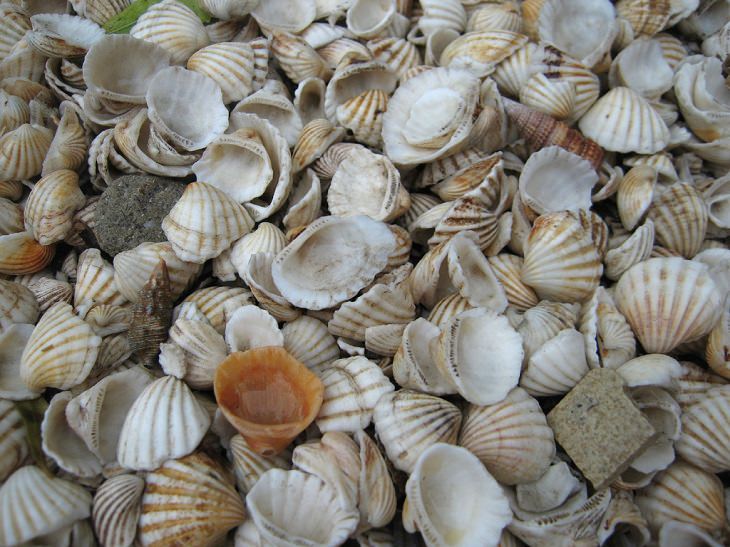
(By seriocomico, Wikimedia Commons)
These are a more commonly found type of mollusks, falling under the bivalve category (like clams). This picture largely depicts the single valve form of this mollusk, often collected on beaches.

(By Manuele Zunelli, Wikimedia Commons)
These are the same species of mollusk in bivalve form, being sold by the bowl for food.
2. Cerastoderma edule
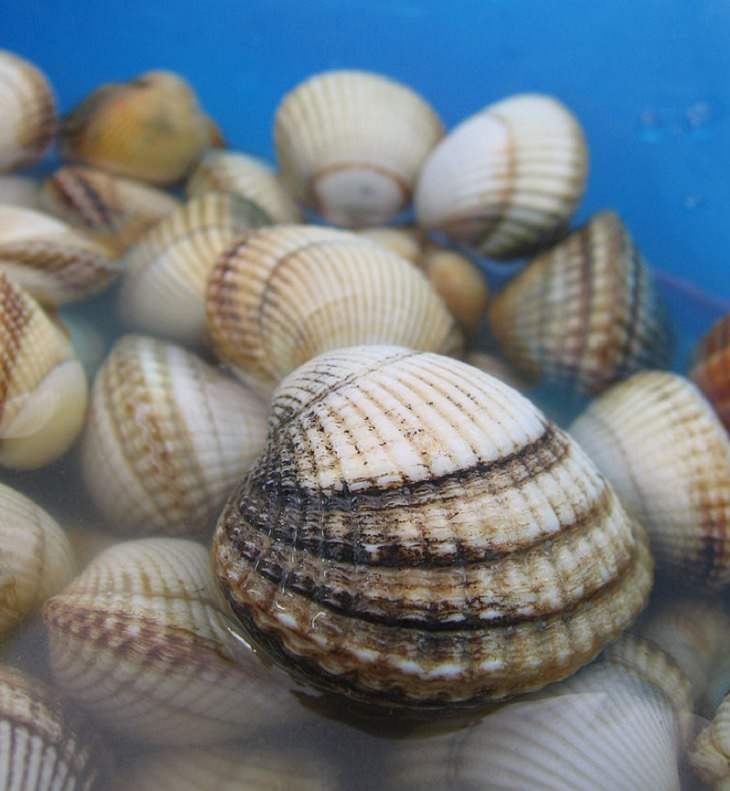
(By Féron Benjamin, Wikimedia Commons)
Also known as the common cockle, this is a bivalve species of saltwater clam that is also enjoyed as a seafood delicacy. They can be identified by the ridges on each of the valves, and the light to dark coloring on the outer side of the valve, which are the digestive glands of the mollusk.
3. Laevicardium crassum

(By Hectonichus, Wikimedia Commons)
This is the Norwegian egg cockle, found on the coasts of the Netherlands, Italy, Portugal, and Ireland. Egg cockles are distinguished by the smooth surface of the shell, with slight ridges across.
4. Laevicardium elatum
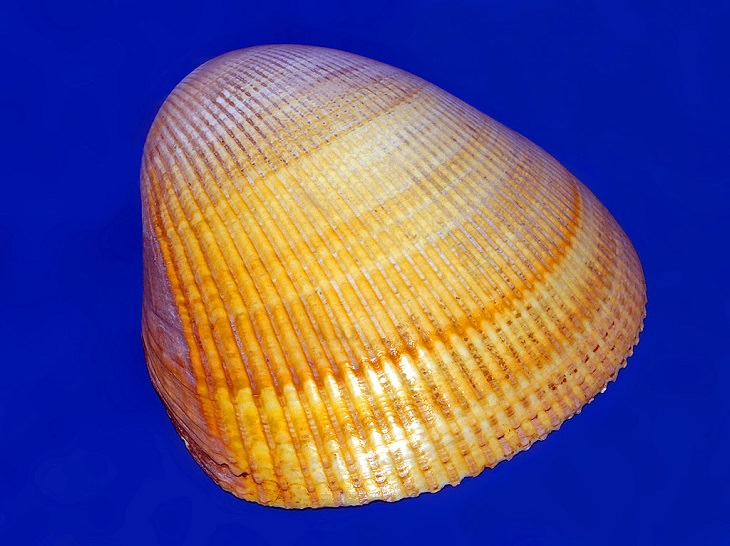
(By Hectonichus, Wikimedia Commons)
The giant egg cockle is found across the Panamic Province, a biogeographical zone stretching across the Pacific coast of Mexico all the way to Ecuador. You’ve probably encountered this shell more than once. This picture shows us a single valve of the bivalve mollusk.
5. Laevicardium pictum
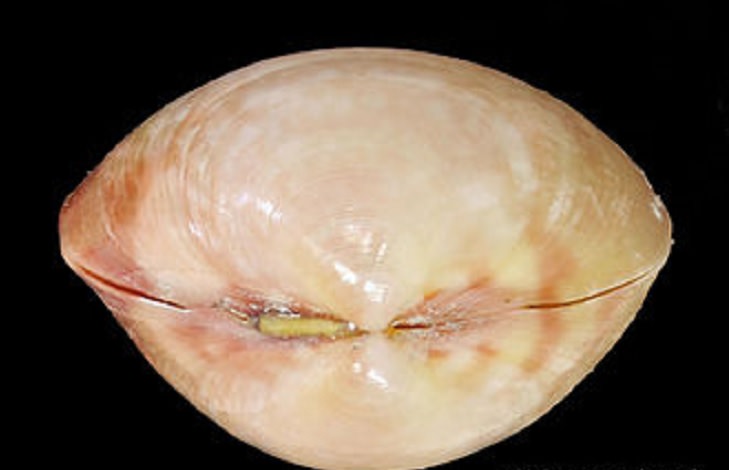
(By FWC Fish and Wildlife Research Institute - Ravenel's Egg Cockle, Wikimedia Commons)
Moving over to the other end of North America, found along the coast of Florida down to the West Indies, is the Ravenel's egg cockle. As you can see, it has an extraordinarily smooth surface and is lightly colored.
6. Fragum erugatum

(By Lpm43792, Wikimedia Commons)
On the shores of Western Australia is Shell Beach, which is home to shallow waters and an abundance of this distinct white shell. It is the heart cockle, also known as the Hamelin cockle or the cardiid cockle.
7. Epidendrium billeeanum
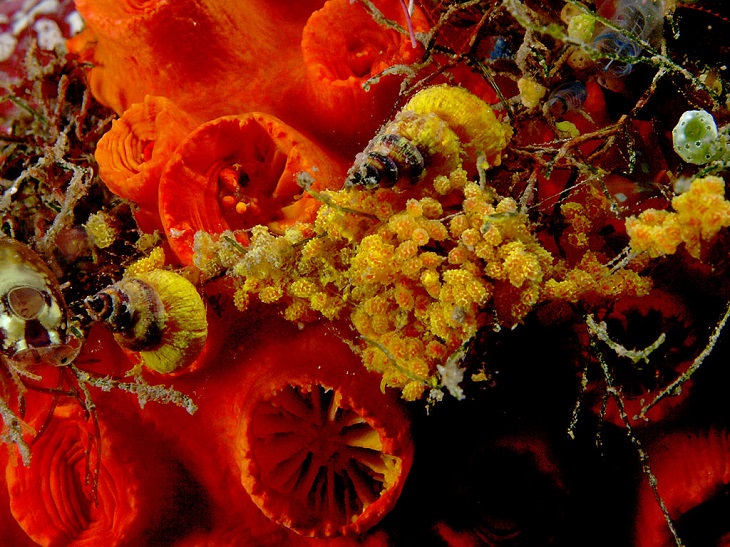
(By Nhobgood Nick Hobgood, Wikimedia Commons)
Many shells collected on the beach were formerly inhabited by snails, slugs, cuttlefish and crabs, among many other creatures. This is a species of sea snail called the Yellow Sea Snail or the Golden Wentletrap, with a lovely dark shell that lucky few may find on the coasts of Hawaii and the Galapagos.
8. Turritella Gastropod Mollusks
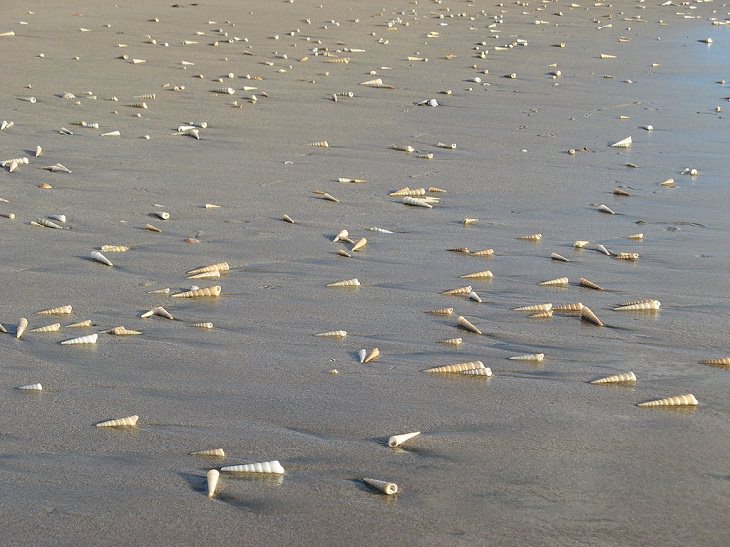
(By Donar Reiskoffer, Wikimedia Commons)
This is a variety of gastropod shells that washed ashore the beach of Playa Grande, in Costa Rica, a Central American Country. These include:
Turritella acropora
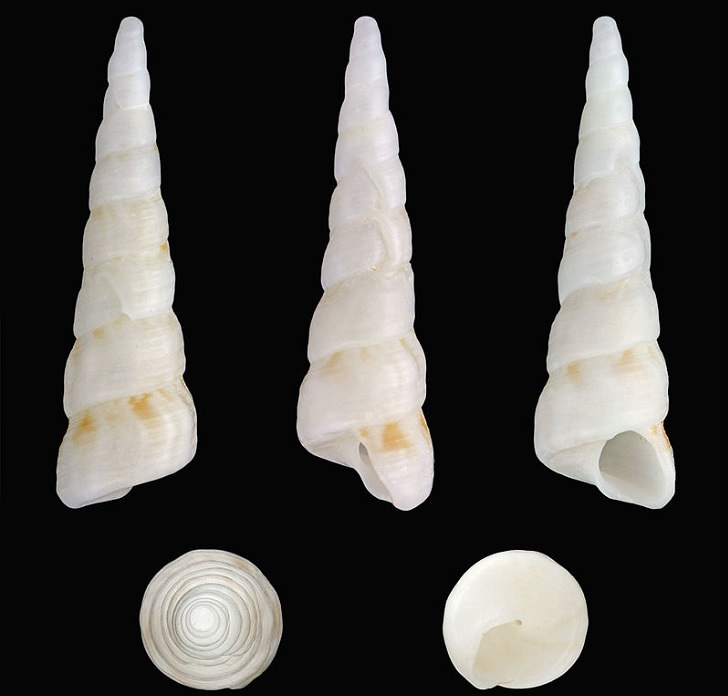
(By H. Zell, Wikimedia Commons)
This is another gastropod mollusk (the shell that was formerly the shell of a snail or slug). It is found primarily on shores along the Gulf of Mexico and the Caribbean sea.
Turritella attenuata
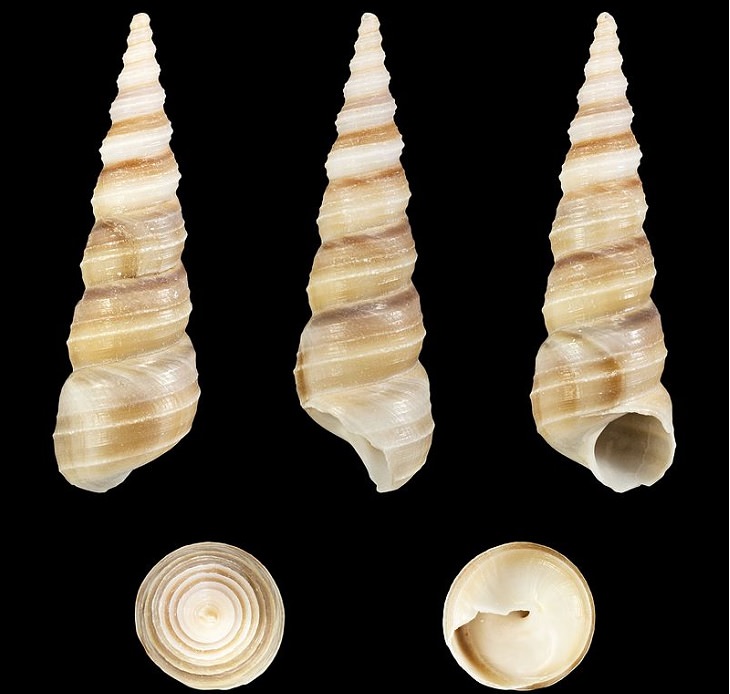
(By H. Zell, Wikimedia Commons)
A slightly more colored gastropod mollusk indigenous to Thailand.
Turritella banksii
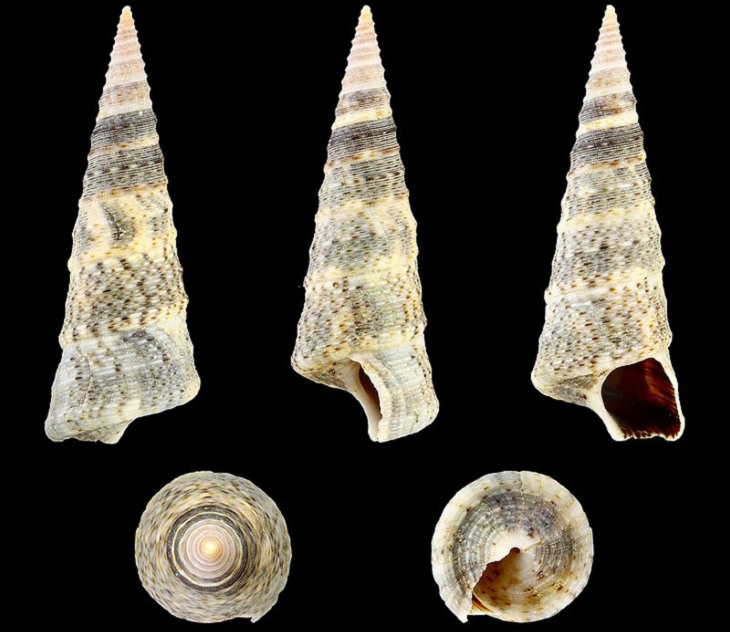
(By H. Zell, Wikimedia Commons)
This shell inhabits the coasts of the Panamic Province.
Turritella cingulifera
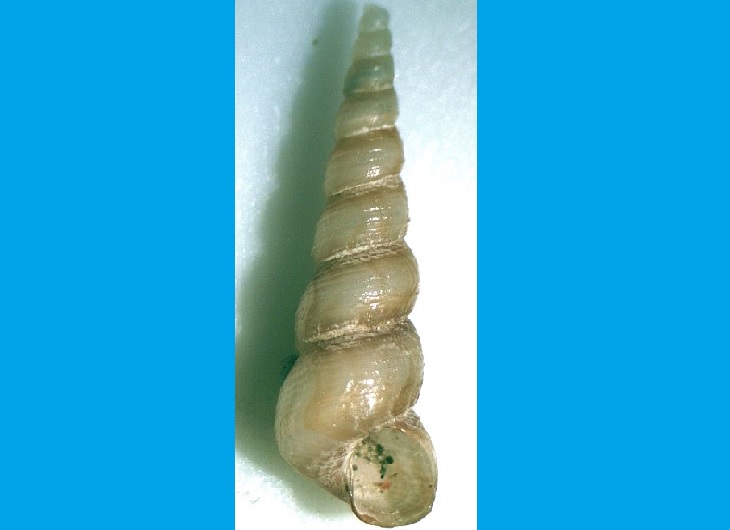
(By Jan Delsing, Wikimedia Commons)
The Australian Coast is filled with smatterings of this species of sea-snail.
9. Nautilus
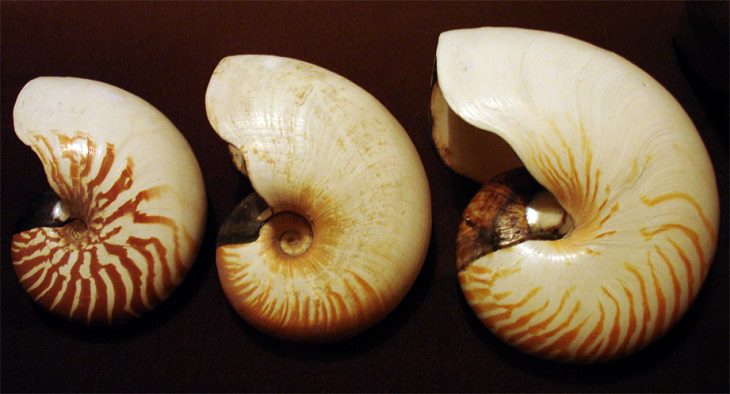
(By Mgiganteus1, Wikimedia Commons)
Nautilus is a genus of cephalopod mollusks found in the Indo-Pacific ocean, with a uniquely patterned shell.
10. Tritia reticulata
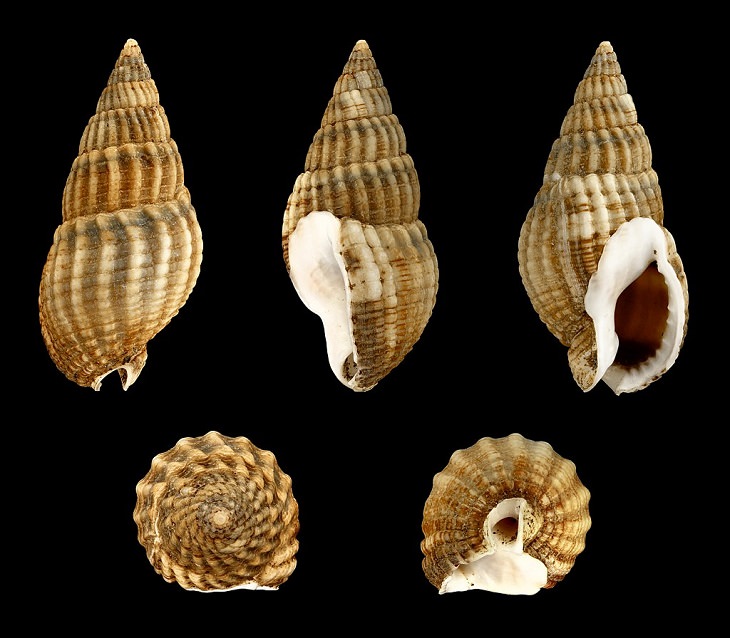
(By H. Zell, Wikimedia Commons)
Here’s a lovely spiral shell that belongs to this species of sea snail, also called the netted dog whelk, found across the Atlantic Ocean, European water bodies and the Mediterranean.
11. Melo melo

(By H. Zell, Wikimedia Commons)
This large sea snail goes by the names Indian volute or bailer shell, the latter name of which was derived from its use in the past to bail water out of canoes and boats. It is found across Southeast Asia, from Malaysia and Myanmar to the Philippines.
12. Monetaria moneta
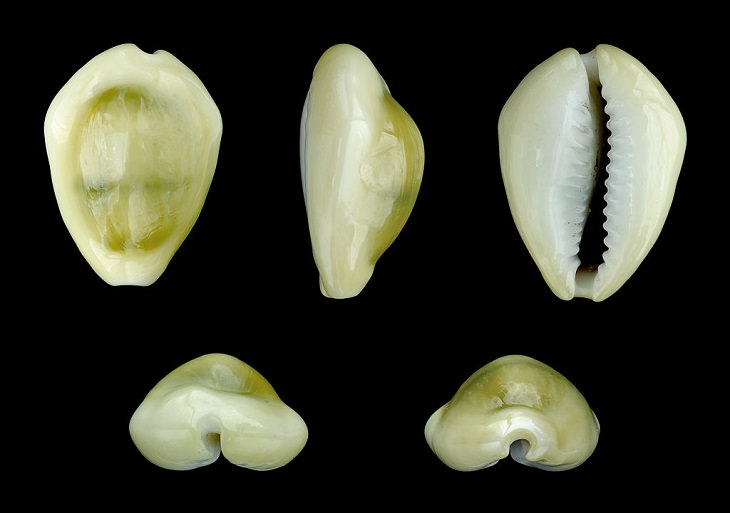
(By H. Zell, Wikimedia Commons)
This shell belongs to the sea snail that goes by the name Money Cowry because these shells were used as a currency before modern forms of currency came into play.
13. Cowries
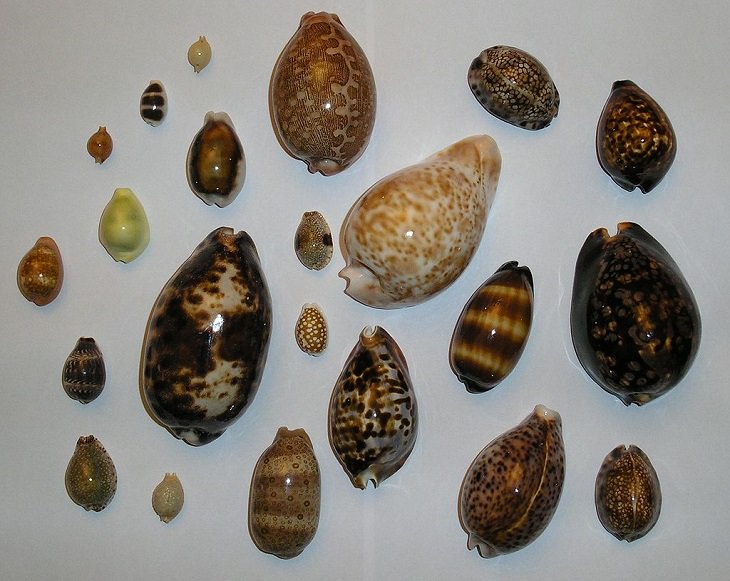
Other than the money cowry, there are numerous species under this genus of gastropod mollusk. This photo depicts the shells of the many different types of cowries
14. Charonia variegata
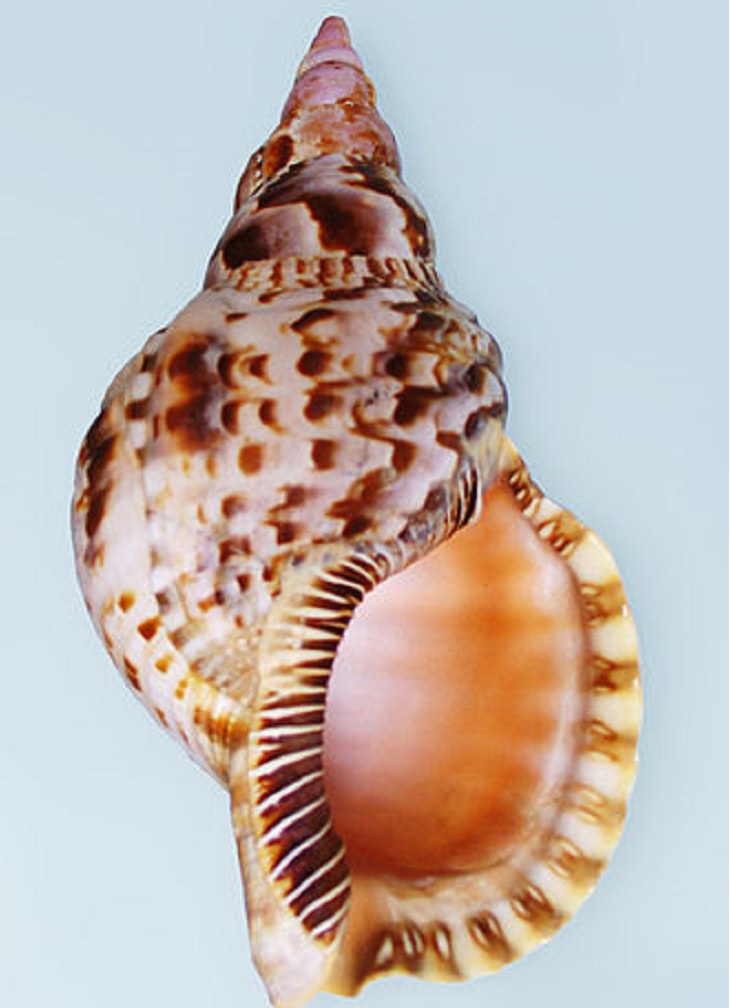
(By Retama, Wikimedia Commons)
This big shell is one under the Genus of Charonia, also known as Triton’s Trumpet, after the Greek sea god Triton, who was often depicted blowing a seashell that resembles those under this genus.
15. Turbinella pyrum
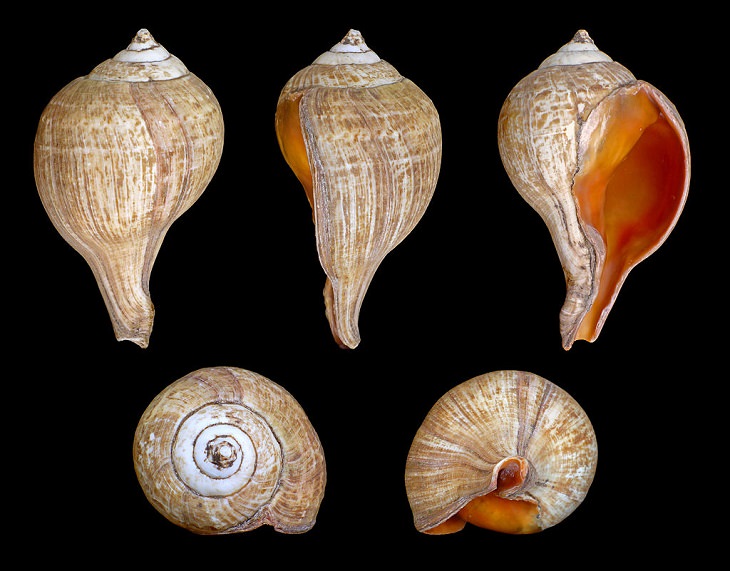
(By H. Zell, Wikimedia Commons)
Finally, we have the chank shell also known as the sacred chank or the divine conch, a rare species found only in the Indian Ocean that is sometimes fashioned into ceremonial trumpets.